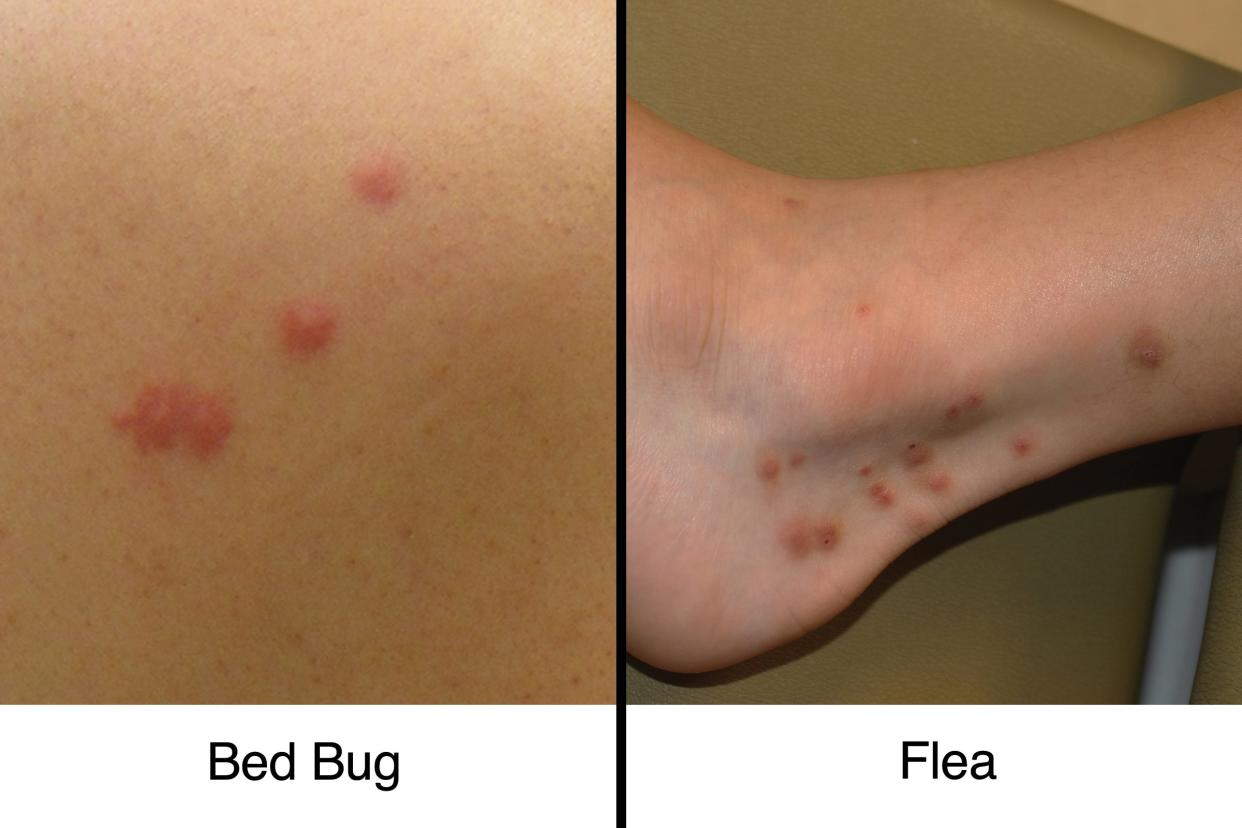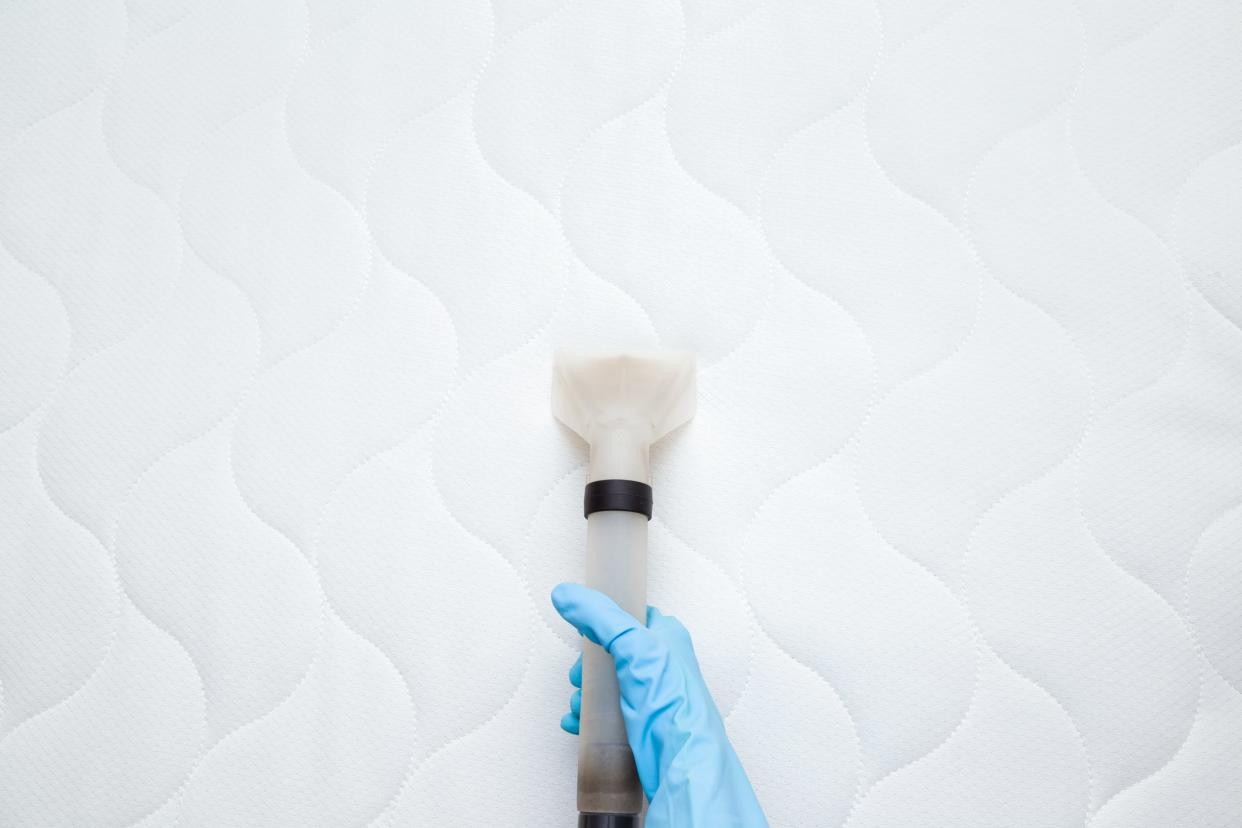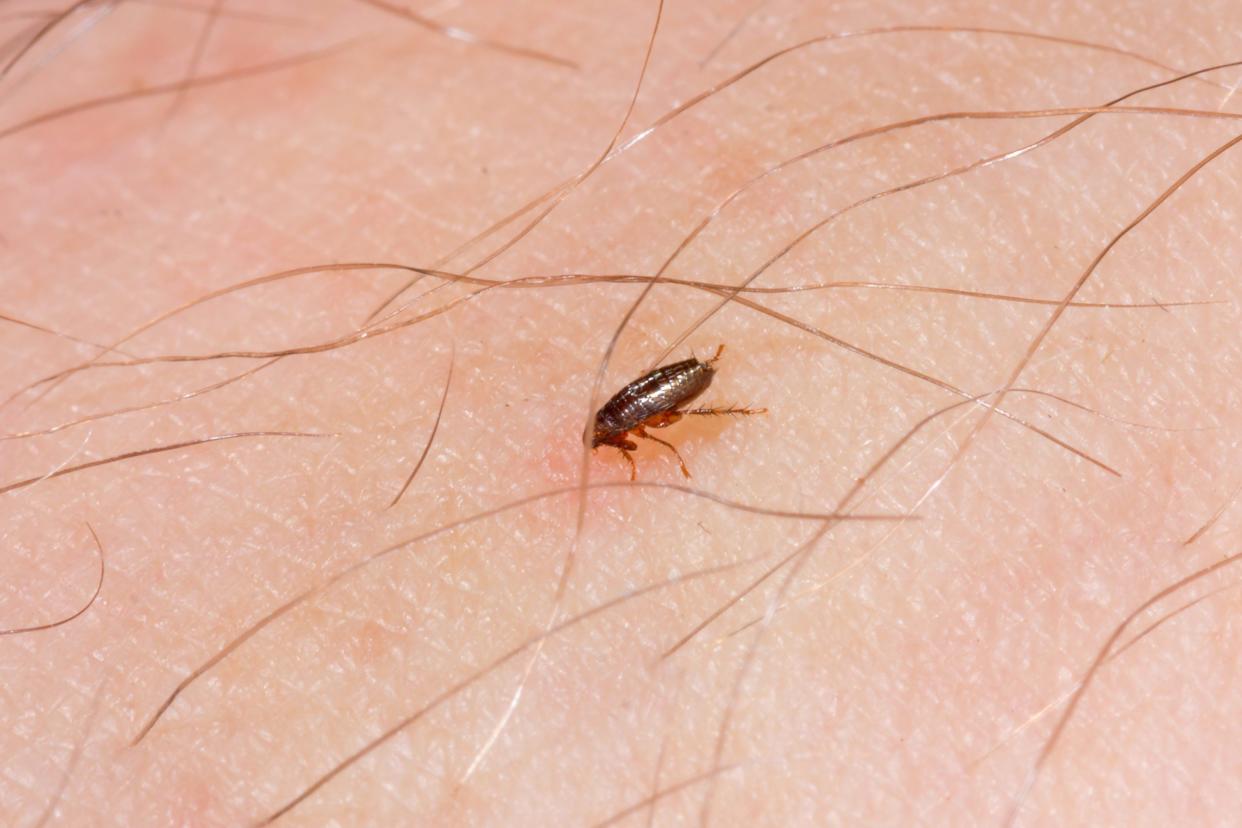Here’s How to Tell the Difference Between Bed Bug Bites and Fleabites

Bed bug bites vs. fleabites
Unfortunately, every season is flea and bed bug season. Both critters tend to prefer warmer months, so they may be more common during late spring, summer, and early fall. (Keep an eye out for these dangerous bugs this summer.) However, they can be a problem at any time of the year because these bugs can live and complete their life cycle inside your home.
So, how can you tell if that itchy, red bite is from a flea or a bed bug? Well, it can be tricky. Both fleas and bed bugs can bite and snack on your blood, causing severe itching and raising your risk for an infection or allergic reaction.
To identify the source, you need to do a little sleuthing, and take into account what the bites look like, where and when you are getting bites, as well as your risk factors (like do you have a pet with fleas?). It’s not a bad idea to make an effort to find and identify the bugs too.
Knowing the difference between bed bug bites and fleabites is important in terms of prevention and treatment. Here’s how to tell.
Where you’ll find bed bugs
Bed bugs are oval-shaped and reddish-brown in color. They have no wings and can’t jump either. These bugs tend to live indoors and hide in cracks in walls or floors, crevices of furniture and bedding. (Some bed bugs might hitch a ride in your car.)
Also, they tend to strike at night. Unlike fleas, they don’t stick around after they eat. A feeding lasts about 4 to 12 minutes, and bed bugs will eat and run, returning to their hiding place once they are filled up. (Here are the 8 signs you’re about to have a bed bug problem.)
Bed bugs are hitchhikers and can spread from home to home, particularly in apartment buildings. They can crawl into suitcases or clothing and you can pick them up while traveling, while staying in a hotel, or living in a dorm.
Where you’ll find fleas
Fleas aren’t picky eaters. They do prefer mammals with fur like dogs or cats, but they aren’t averse to biting humans either. They can live about eight days on short-haired cats and dogs and longer on long-haired animals. Fleas don’t have wings but can jump about 8 inches.
Once a flea finds its preferred host (generally a pet), it will remain there for its entire life cycle or until physically removed by you, your dog’s vet or your groomer. That said, if you are close by, a hungry flea will take a bite from a human before choosing a dog or cat as their life partner.
Fleas generally don’t live on humans, but you can still have fleabites if you don’t own a pet. You can encounter fleas in your yard or other outdoor areas, and fleas can also live on mice or other rodents in your home.

Bed bug bite and fleabite symptoms
Bed bug bites
If bed bugs are to blame for your bites, you will likely see clusters of red bites or welts. Each cluster usually has three to five bites that are arranged in a zig-zag fashion, according to the American Academy of Dermatology (AAD). (Here’s how to spot the difference between a chigger bite and a bed bug bite.)
“Bed bugs usually bite exposed areas of skin during sleep, such as your face, arms, and trunk,” says Dirk Elston, MD, professor and chairman, department of dermatology and dermatologic surgery, Medical University of South Carolina, Charleston. They like an easy meal so your hands, neck, and legs—the exposed skin outside your bed covers—can also be fair game for these 1/4-inch-long midnight snackers. Specks of blood on your bedding and a sweet musty odor can be another telltale sign that you’ve got bed bugs.
It’s important to remember that bed bug bites don’t always cause symptoms. Some people just don’t react to the bites. In this scenario, the only way you know you have bed bugs is when you see one or more. (A newly hatched bed bug is roughly the size of a poppy seed and can be almost transparent. Adult bed bugs are flat, about the size of an apple seed and have rusty-red-colored bodies.) If one person in a family is experiencing bed bug bites, other family members may be too—but just not showing signs of them.
People who do react to bed bug bites can feel intense itching and develop large welts. The welts usually go away after a few days, but will be followed by more bites as the insects feed again. “Bed bug bites heal with a blue-brown hue,” Dr. Elston says.
Whether you’re itching or not, these are some signs that indicate you have a bed bug problem. If you don’t take steps to rid your home of the bugs, you will surely get more bites. Bed bugs are a tenacious pest to eradicate because of their ability to hide in the smallest places, including electrical outlets, lamp shades, or tiny crevices in a bed frame or piece of furniture.
Fleabites
Fleabites tend to look like other insect bites. They are small, reddish bumps with a point in their center, which marks the spot that the hungry flea attached to your skin. Fleabites tend to line up in rows of three or four, explains Meghan Feely, MD, clinical instructor, dermatology, Mount Sinai Hospital, New York City.
Fleas tend to attack your lower legs, namely your ankles. If you have a cat or dog, your doctor will likely know your bites are caused by hungry fleas instead of other creepy crawlers, Dr. Elston says. Fleas also like hair so they may flock to your scalp or genital areas, he notes. “Fleabites cause itching and irritation,” says Dr. Feely. They are usually more of a nuisance than anything else.

How long does it take to see a reaction?
Bed bug bite
Bed bug bites don’t always cause itchiness right away. It can take days to get a reaction. Some people develop itchy welts within a few days of the first bite. For others, it can be two weeks.
Reactions tend to become more severe with time. The first round of bed bug bites may take time to cause symptoms, but if you get bit again, you may have a reaction within mere seconds, according to the Centers for Disease Control and Prevention (CDC). (Here are the best ways to treat every type of bug bite.)
Fleabite
Some people experience itchiness soon after being bit by fleas, but for others, reactions tend to worsen over time. You can also have a delayed hypersensitivity reaction, for example, which is a more dramatic reaction sometimes seen in children. There is no real reaction after the first fleabite, but with more exposure down the road, children can develop itchiness that can last up to six weeks.
“This occurs in children aged 2 to 10 and it can be dramatic,” says Bernard A. Cohen, MD, professor of dermatology and pediatrics, at Johns Hopkins University School of Medicine in Baltimore.
Treatment for bites
Bed bug
Your first step is to wash the bites with soap and water to stave off infection and help reduce itchiness. An over-the-counter or prescription corticosteroid cream can also control the itch. Bed bug bites usually go away within a week or two, the AAD points out. (Here are some other secrets bed bugs don’t want you to know.)
See a doctor if:
If your bed bug bites start to show signs of infection such as oozing pus, tenderness or warmth, see a doctor. Generally bed bug bites don’t cause infections unless you introduce bacteria into the area by severely scratching the bites. Other reasons to schedule a visit for bedbug bites are an allergic reaction which is marked by swelling or hives. Your doctor can prescribe prescription antibiotics to help clear up any possible infections.
The silver lining here is that bed bugs don’t spread or cause disease.
Fleabite
If you are bitten by a flea, use a pair of clean tweezers and pull it from the skin, Dr. Feely says. “Medications or over-the-counter remedies can also be recommended for the itchy bumps,” she adds.
These include prescription or over-the-counter anti-itch creams and/or antihistamines, which help with itch too. Your doctor may prescribe topical malathion five percent, which is also used to treat head lice infestations, she says.
See a doctor if:
If your fleabites become infected due to scratching, see your doctor. Infected fleabites ooze pus and are tender to the touch, Dr. Elston explains. Oral or topical antibiotics will likely do the trick.
Treatment usually involves daily antihistamines to stop the itch, and topical steroids on the bites. Unlike bed bugs, fleas can spread disease in some countries and circumstances, like the bubonic plague and typhus fevers, but this is rare in the modern world, Dr. Elston says.

How to prevent bites
Bed bugs bites
Get rid of clutter to reduce places that bed bugs can hide. Using a protective cover for mattresses and box springs and vacuuming regularly can also make a difference.
Also wash and dry linens or clothing in a hot dryer to kill the bugs, and store items you can’t wash in sealed plastic bags until you are sure you have gotten rid of the last of them. Adult bed bugs can survive for months without feeding. (Check out these expert tips on how to get rid of bed bugs.)
It can be challenging to try to eliminate a bed bug infestation on your own. It’s a good idea to call in a professional exterminator to help you get them out and keep them out.
Fleabites
Fleabite prevention starts with making sure your pet is on a solid prevention program. When you’re spending time outdoors, make sure that you use insect repellent that contains DEET 20 to 30 percent, and that you wear clothing that covers exposed skin, Dr. Cohen says. (Here are some chemical-free bug repellants that actually work.)
If your house has been infested with fleas, the first step is to get your dog or cat treated. Washing your pet with soap and water and using a flea comb may be enough to help with minor infestations, but you will need to contact your vet for more severe flea problems.
Flea eggs and larvae are commonly found in floors and rugs, and vacuuming can help remove them and break the life cycle. Contact an exterminator to make sure you get all of them, Dr. Elston suggests.
How Do You Know if You Have Bed Bugs?
What Do Fleabites Look Like?
Chigger Bite vs. Bed Bug Bite
The post Here’s How to Tell the Difference Between Bed Bug Bites and Fleabites appeared first on The Healthy.



